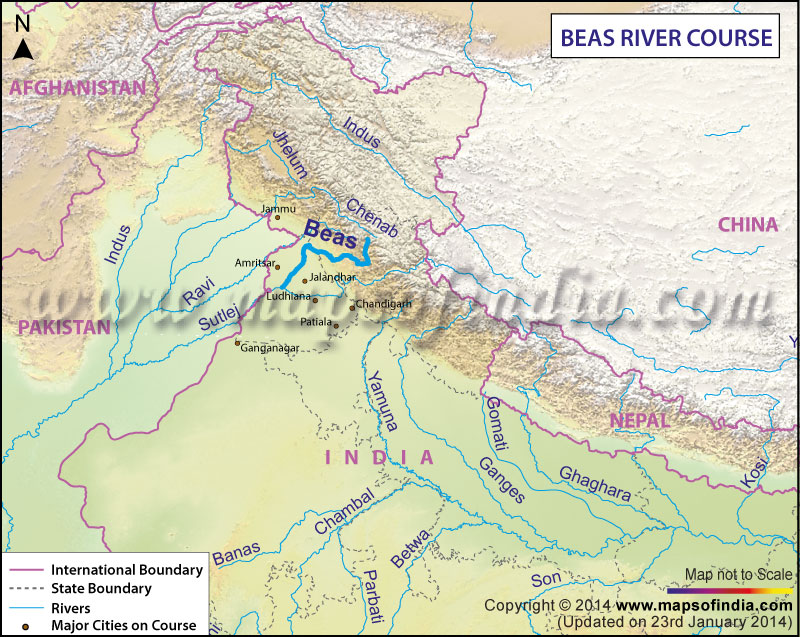The Beas River is a river passing through the northern Indian states of Himachal Pradesh and Punjab. It is one of the five rivers, from which Punjab, meaning 'five rivers', gets its name. The total length of the river is 470 km (290 miles). The drainage basin of the river is 20,303 sq km large.
The Course of the Beas River
The Beas River flows from a height of 14,308 ft at Rohtang Pass, Himachal Pradesh, from where it flows through the Kullu valley towards south, adding from various mountains bound tributaries. The river crosses Mandi and turns west, flowing into the Kangra valley at Sandhol at 1,940 ft above sea level. The river is divided into three directions, which join back after crossing Mirthal at 980 ft above sea level. The Beas meets the Shivalik Hills in Hoshiarpur and turns north, creating a boundary with the Kangra district, separating the Gurdaspur and Hoshiarpur districts. Coming down from the valley, it enters into Punjab at Kapurthala, and turns south and meets into the Sutlej River at Harike, at around 470 km. The major tributaries of the Beas River are Bain, Banganga, Luni and Uhal, along with Banner, Chakki, Gaj, Harla, Mamuni, Parvati, Patlikuhlal, Sainj, Suketi and Tirthan.
The Sutlej enters into Pakistan and joins the Chenab River, which later flows into the Indus River. India shares the waters of the Beas and Sutlej rivers with Pakistan under the Indus Waters Treaty.
History
The Beas River is the point of India's eastern-most border, which marks Alexander the Great's conquests in 326 BC. The river is known to have been the biggest hurdle in the way of Alexander's India invasion. The name of the river 'Beas' is known to have originated from its Sanskrit name 'Vipasha'. The origins of the name are often connected with 'Vyasa' of Veda Vyasa, proving that the river starts from the Vyasa Kund. The river went through development under the Beas Project for irrigation and hydroelectric power generation in the 20th century. The Pong Dam was finished in 1974 in the second phase, while the Pandoh Dam was completed in 1977 in the first phase, around 140 km upstream. Initially used for irrigation, the Pong Dam began the generation of power with a 360 MW capacity.
EBAKB 201114
Last Updated on : March 13, 2020

